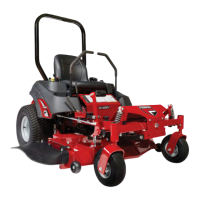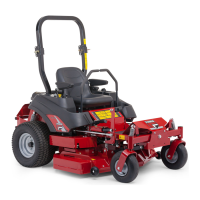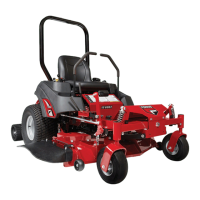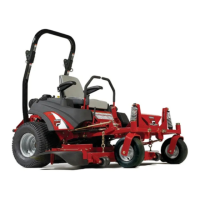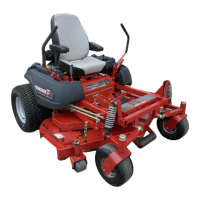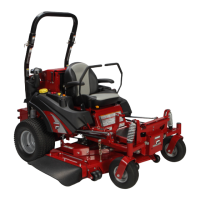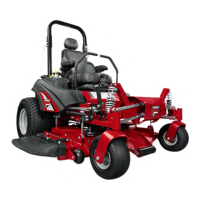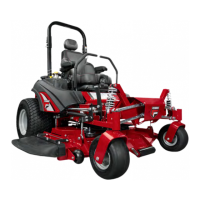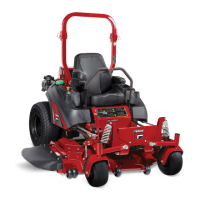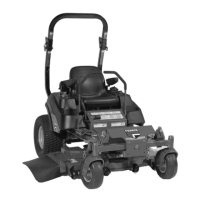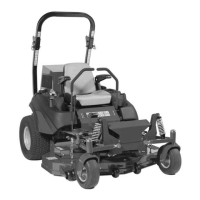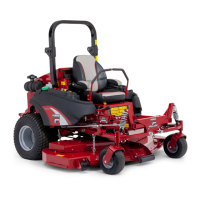31
33
12. Use a suitable strap wrench to remove the filter bowl (C)
from the filter base (D).
13. Remove the filter element (E) and discard the element.
14. Remove the O-ring seal (F) from the filter bowl and
discard the O-ring.
15. Ensure the filter bowl is clean and free from dirt.
16. Install the filter element into the filter base.
17. Install new O-ring seal to filter bowl and install the filter
bowl to the filter base. Do not use a tool to install the filter
assembly. Use hand pressure only to tighten the filter
bowl.
18. The fuel system must be primed before starting the
engine. See Priming the Fuel System.
Draining the Fuel Filter and Water Separator
NOTICE The water separator is not a filter. The water
separator separates water from the fuel. The engine should
never be allowed to run with the water separator more than
half full. Engine damage may result.
1. Place a suitable container underneath the fuel filter to
catch spilled fuel.
2. Open the drain (A, Figure 32) on the fuel filter. Dispose of
the drained fluid correctly.
3. Close drain and use hand pressure only.
4. Place a suitable container under the water separator to
catch spilled fuel.
5. Open the drain valve (A, Figure 33) on the water
separator. Dispose of the drained fluid correctly.
6. Close the drain valve with hand pressure only.
NOTICE The water separator is under suction during
normal engine operation. Ensure that the drain valve is
tightened securely to help prevent air from entering the fuel
system.
Check/Add Engine Oil Level
Interval: Before each use.
1. Use the engine oil dipstick (A, Figure 34) to check the
engine oil level.
34
2. If the engine oil level is low, add engine oil through
the engine oil fill (B). Refer to the Lubricant Viscosity
Recommendations for specific oil recommendations.
Lubrication Viscosity Recommendations
Use API CK-4 rated oil.
The proper SAE viscosity grade of oil is determined by the
minimum ambient temperature during cold engine start-
up, and the maximum ambient temperature during engine
operation.
Refer to figure 35 (minimum temperature) to determine a
required oil viscosity for starting a cold engine.
Refer to figure 35 (maximum temperature) to select the
oil viscosity for engine operation at the highest ambient
temperature that is anticipated.
Note:Generally, use the highest oil viscosity that is available
to meet the requirement for the temperature at start-up.
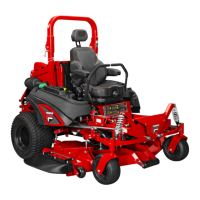
